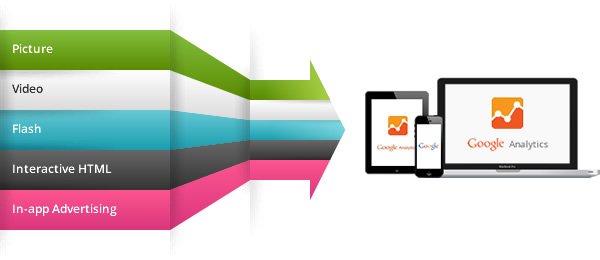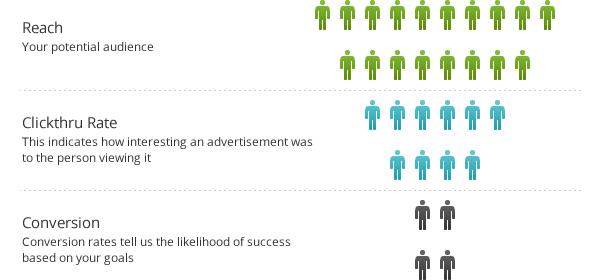Your Google Analytics
Partner in Asia Pacific
We are in the business of enabling actionable online
insights throughout this region

Display advertising (banner advertising) is a form of advertising that conveys a commercial message visually using text, logos, animations, videos, photographs, or other graphics. Display advertisers frequently target users with particular traits to increase the ads’ effect.
According to studies & research, as of 2012, there are 17.5 million active internet users in Malaysia. The top activities conducted by users online are reading or sending email, using a search engine to find stuff and of course interacting with communities with shared interests on social networks such as Facebook or twitter.
This represents an enormous opportunity for companies to reach out to a technologically savvy audience who is continuously interacting with the world wide web for various interests.
In order to uniquely identify anonymous users, online advertisers today tend to make use of cookies, which are unique identifiers of specific computers, to decide which ADs to serve to a particular consumer. Cookies can track whether a user left a page without buying anything, so the advertiser can later retarget the user with ADs from the site the user visited.
As advertisers collect data across multiple external websites about a user’s online activity, they can then combine this information to create a picture of the user’s interests to deliver even more targeted advertising. This aggregation of data is called behavioral targeting. Advertisers can also target their audience by using contextual and semantic advertising to deliver display ADs related to the content of the web page where the ADs appear. Retargeting, behavioral targeting, and contextual advertising all are designed to increase an advertiser’s return on investment, or ROI, over untargeted ads.
As advertising needs become more sophisticated, display ADs can also be personalized based on a user’s geography through geotargeting. Basic information such as a user’s IP address can indicate a user’s rough location with a limited degree of accuracy. This information can be supplemented further through the use of a phone’s GPS or the location of nearby mobile towers to have a clearer indication of the user’s current position for a mind boggling array of advertising possibilities.

If your organization intends to activate Display Advertising, it is important to understand some key metrics that you will encounter throughout your engagement process such as Reach, Clickthrough rates, Bounce rates, Conversion rates and of course return on Investment in order to have a better picture of the performance of your Online Display Marketing activities.
Reach for online advertisements are defined by the number of people who can potentially view your advertisement online. Typically this will be represented by the number of visitors that visit the advertisement network you are planning to use.
Typically, when we talk about online marketing, a clickthrough rate refers to the likelihood of a user clicking on your online initiative. This is generally used as a benchmark by advertising agencies to gauge how well an advertisement or a campaign is received by the audience.
Bounce rate is the percentage of visits that go only to one page before exiting the site.
When a user bounces on a page that was advertised by a display advertisement, it indicates that the user was intrigued enough to click on the advertisement, but when they visited your site, they found that what they saw on the advertised page is not relevant to them.
There are a number of factors that contribute to your bounce rate. For example, visitors might leave your site from the entrance page if there are site design or usability issues. Alternatively, visitors might also leave the site after viewing a single page if they were not able to find what they were expecting.
The conversion rate basically tells you what percentage of the people clicking through an AD ended up completing an action or a goal that the advertiser desired. This could be anything from a purchase made online, a registration for a newsletter or even a request for more information.
When brands embark on display marketing, there is always a cost involved together with a goal to be achieved. Return on investment in layman’s tries to quantify how much value is obtained for every ringgit spent.
In its simplest form, imagine an advertisement that will run for a month before Valentine’s that you are using to drive traffic from search engines to market flowers throughout Malaysia.
If the cost of the campaign was RM 10,000.00 and the sales generated by the campaign was RM 50,000.00, this means that for every RM 1 spent, the brand earned RM 5 back.
As Google Analytics Partners, we are able to assist in planning & setting up the environment to track and measure your online display marketing activities and relating it back to actual business results.
Getting basic insights from your online media agency is useful, but when combined with the information from your brand’s online marketing activities, they offer a clearer picture of how well your business is doing.
Let us help you identify how you can improve your Return on Investment (ROI) and accelerate your business.
Subscribe to our mailing list for the latest updates and quarterly insights from our research team.
Subscribe Now